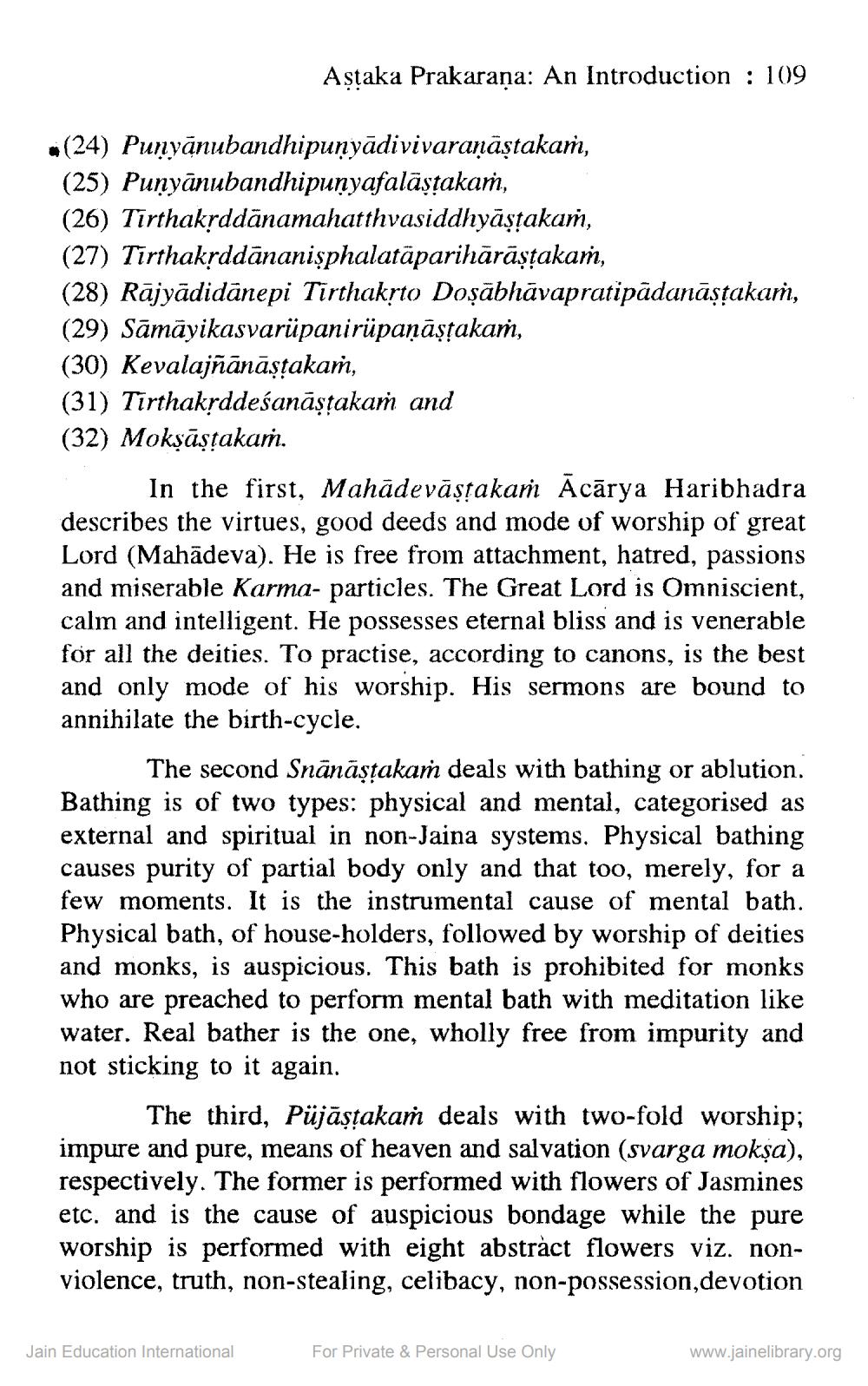________________
Aṣṭaka Prakaraṇa: An Introduction : 109
(24) Punyanubandhipuṇyādivivaraṇāṣtakaṁ, (25) Punyānubandhipuṇyafalāṣṭakaṁ,
(26) Tirthakṛddānamahatthvasiddhyāṣṭakaṁ, (27) Tirthakṛddānaniṣphalatäparihārāṣṭakaṁ,
(28) Rājyādidānepi Tirthakṛto Doṣābhāvapratipādanāṣṭakaṁ, (29) Sāmāyikasvarüpanirüpaṇāṣṭakaṁ,
(30) Kevalajñānāṣṭakaṁ,
(31) Tirthakṛddeśanāṣṭakaṁ and
(32) Mokṣāṣṭakaṁ.
In the first, Mahādevāṣṭakaṁ Acārya Haribhadra describes the virtues, good deeds and mode of worship of great Lord (Mahadeva). He is free from attachment, hatred, passions and miserable Karma- particles. The Great Lord is Omniscient, calm and intelligent. He possesses eternal bliss and is venerable for all the deities. To practise, according to canons, is the best and only mode of his worship. His sermons are bound to annihilate the birth-cycle.
The second Snanāṣṭakaṁ deals with bathing or ablution. Bathing is of two types: physical and mental, categorised as external and spiritual in non-Jaina systems. Physical bathing causes purity of partial body only and that too, merely, for a few moments. It is the instrumental cause of mental bath. Physical bath, of house-holders, followed by worship of deities and monks, is auspicious. This bath is prohibited for monks who are preached to perform mental bath with meditation like water. Real bather is the one, wholly free from impurity and not sticking to it again.
The third, Püjāṣṭakaṁ deals with two-fold worship; impure and pure, means of heaven and salvation (svarga mokṣa), respectively. The former is performed with flowers of Jasmines etc. and is the cause of auspicious bondage while the pure worship is performed with eight abstract flowers viz. nonviolence, truth, non-stealing, celibacy, non-possession, devotion
Jain Education International
For Private & Personal Use Only
www.jainelibrary.org




